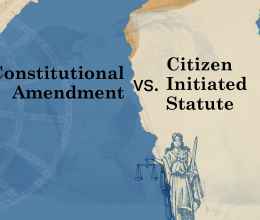Last week, the Department of Justice announced an end to using private prisons to hold federal prisoners. This decision followed a scathing report which highlighted that private prisons are less safe, provide less services and programs, and do not substantially save on costs. This is a major victory for those who have fought to end prison privatization.
But don’t write off private prisons just yet.
The process will happen gradually over the next five years, as the DOJ advises the Federal Bureau of Prisons to decline contract renewals or substantially reduce the scope of contracts. Plus, this decision only affects federal prisoners.
At its highest capacity, the Federal Bureau of Prisons used private prisons to house approximately 15 percent of its population, just under 30,000 prisoners.
What Does This Mean For Ohio?
While the DOJ’s announcement is a clear warning to all states using private prison operators, it only goes so far. The policy change does not apply to immigration detention centers run by the Department of Homeland Security, or to state prisons with private operators or owners.
In Ohio, the Bureau of Prisons had already declined to renew its contract with the Corrections Corporation of America (CCA) for the privately-owned Northeast Ohio Correctional Center in Youngstown, Ohio. This decision wasn’t surprising―the facility had been riddled with problems since it opened in 1997. Within the first 14 months, the facility experienced 13 stabbings, two murders, and six escapes. Youngstown officials even sued CCA for its mismanagement of the facility. As a result, it temporarily shut down, only to later re-open again under CCA control. In 2014, the BOP decided not to renew its contract with CCA after multiple protests at the facility objecting to unsanitary food conditions, inadequate access to programming, and lack of medical care. Unfortunately, the U.S. Marshal Service still pays CCA to hold hundreds of detainees at this prison.
Ohio’s Failed Experiment with Prison Privatization
Ohio was the first, and is still, the only state to sell a prison to a private operator. Privatization was seen as a way to cut costs for our bloated prison system.
Ohio prisons hold over 50,000 people in a system built for less than 38,000.
Simply put – the experiment failed. The first 18 months that Lake Erie Correctional Institution was under CCA control were a failure. Drug use was rampant throughout the facility, contraband was being tossed over the perimeter fence, violence increased, and medical care deteriorated. It’s taken years for the facility to stabilize, and there are still problems.
Privatization is only in the best interest of those who make a profit. It does not benefit the staff, prisoners, local community members, or the state. The DOJ voiced these concerns loud and clear when it announced it will no longer contract with private prison operators.
So why is Ohio on a dangerous path to sell another prison to a for-profit company?
Ending Prison Privatization in Ohio
Ohio now plans to sell a second prison to a private company. Last year, in a legislative sleight of hand, the sale of the North Central Correctional Complex in Marion, Ohio was inserted into an unrelated bill right before summer recess. Concerned citizens were given no opportunity to submit testimony or engage in public discussion, and the bill passed with little media coverage at the time.
Host a screening of our award winning documentary, Prisons for Profit for your class, social club, church, or community group.
For-profit prisons make more money as their populations grow. Our prisons are bursting at the seams at 130% capacity, even though recidivism rates are at an all-time low. For-profit prisons create a perverse incentive to lock up more people because empty beds are money out the window. And while the purpose of prison should be safety and rehabilitation, a private prison operator’s mission is to make money. People should never be treated like dollar signs, and Ohio needs to stop feeding this system.
Ohio should end its failed experiment with privatization and invest in real, lasting criminal justice reform. We must strive to send less people to prison, for less time, while increasing cost-effective rehabilitation programs. The DOJ is ending its use of private prisons, and it’s time for Ohio to follow suit.










